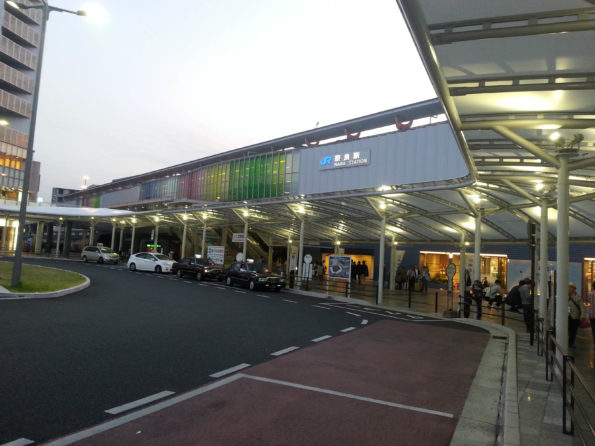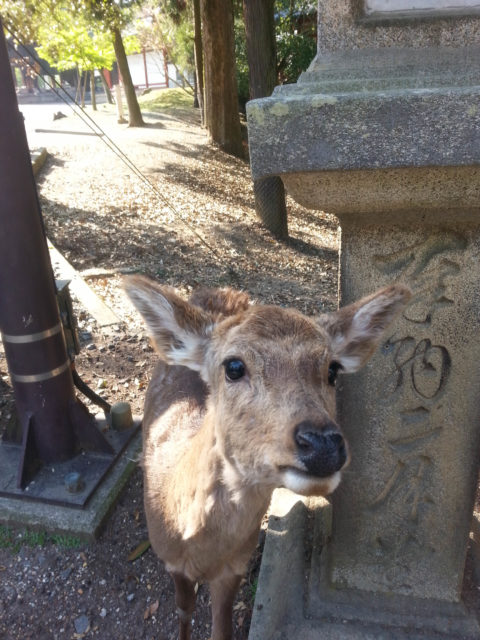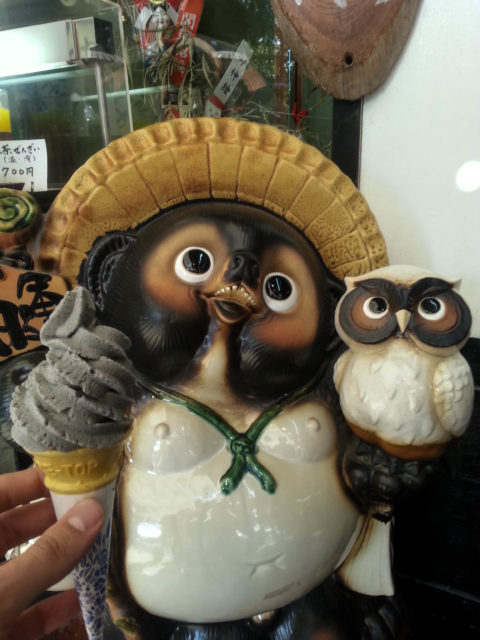Nara Deer Park & Heijo Palace
For my day trip to Nara, I met up with a few travel companions, Fred & Gert, from Belgium. Fred and I met earlier this year at a hostel in Pai, Thailand. Fast forward a few months and we both ended up in Japan! Isn’t that the greatest part of traveling, making lifelong connections! These days its as easy as posting “Hey I’ll be in Japan next week in the Kansai Region, send me a message so we can meet up!”. Its like Magic! Yea, you never know if, when or where you’ll see each other again, but taking that step to connect just in case the opportunity arises in the future is totally worth it! You can follow my Instagram @Tallypack, I post all kinds of nonsense there.

Nara Deer Park
The City of Nara
Honestly, I didn’t really research anything about Nara at the time, although I knew it was a popular destination for travelers. I relied mostly on table talk from other guests at my hostel, Peace House Sakura. I do regret not going to the National Museum of Nara (Museums Website), I missed that. However I was able to see the two big attractions:
- The Heijo Palace (Jump To) is a recreation that is quite grand is size and built using traditional building techniques. The Palace grounds is part of a larger excavation and heritage restoration project and is located to the west of the train station. The authentic craftsmanship and quality really fosters the impression of being in a place of great importance, a regal and powerful place.
- The Todai-ji Temple (Jump To) that has a Guide Map of Nara Park that you can download as a PDF which includes many temples and shrines you’ll see on your stroll through the park. Or you can pick up a map from the information booth too so you don’t miss any sights.
- Directions to Nara (Jump To) Kintetsu Nara Station
The city is quite spacious, sprawling out over a countryside landscape. Its definitely a walk-able city. I think it took us just a few hours of walking time to tour the perimeter of the city and see all the sights. With a population of just under 370,000, it’s a very quaint and comfortable city with mild temperatures in the spring. It was also surprisingly new, with modern neighborhoods just down the road from the busy city center jammed packed with historic monuments. Nara is known for having beautiful Buddhist Temples and Shinto Shrines in addition to having once been the seat of power during the Nara period of 710 to 794 AD.
Nara Park Gallery
The other big attraction lies to the east of the train station: Nara Park. The city’s park is a popular place for the 1,200 sacred white spotted deer famous for being super friendly and polite; bowing to receive crackers from guests! Indeed, very Japanese Deer. Some of the school kids on a field trip were teasing the deer with crackers creating a small following of hungry deer to congregate at the shops! Within the park you can find many of the city’s most impressive temples and shrines. The national museum of Nara (2nd Link), Isuien Garden and Sarusawa Pond are also a stones toss from the park. On a sunny day, it’s a really beautiful place to walk around, eat ice-cream and learn a little Japanese History. The next page is a little bit more detail on the Heijo Palace and Todai-ji Temple, enjoy!.
Heijo Palace (平城宮)
The one thing I loved most about Nara’s Heijo-kyo was the amazing quality of the reconstructions. Japan is well-known for it’s traditional carpentry, arguably even more so than China, where it originated. Seeing the beauty and detail in person, and the reconstruction efforts recorded in the museum located inside the Daigokuden (first hall) building was beyond impressive! It truly is a palace!

Nara-Heijo Palace
I’ve been trying to find a video documentary on the palace reconstruction, but alas I can’t find anything half-decent, if you can please link it in the comments down below. However, I did find a recommendation for “Begin Japanology” and “Japaneology Plus” which feature half hour episodes on pretty much anything Japan, including ‘Sashimono Woodworking‘. There is also a Core Kyoto episode on Buddhist Architecture and the carpentry technique of joinery. A shrine carpenter is called a ‘Miyadaiku’, which is a very special skill that is unfortunately dying out in its traditional form.
- Suzaku Gate
- Suzaku Gate Woodwork
- Heijo Palace
I’m going to skip the details of the excavation site and history of Palace. The Nara Period really marked the beginning of a centralized empire in Japan with administrative ministries of command based off the Tsang dynasty model. There are a lot of sources available that summarize it pretty well:
- Japan’s National Tourism Organization has a great website on Japan’s most popular tourist sites- with info guides – including the Heijo Palace, ancient temples, shrines and other monuments.
- TravelDreamScapes is a fun little blog with a quick summary of the grounds of the palace and some pretty great photos of the clothing commonly worn during the Nara period for festivals.
- JapanVisitor also has a really great little article on the palace grounds with lots of links for additional info and transportation.
- Video footage of the Heijo-kyo Tempyo Festival at the palace in 2014. Also demonstrating the beautiful traditional garments of the 8th century period.
Todai-ji Temple (東大寺)
The Todai-ji Buddhist Temple is one of the highlights of Nara. It houses the world’s largest bronze statue of Buddha, known as Vairocana. In 743 AD, Emperor Shomu commissioned the construction of the Buddha Statue and soon thereafter the Great Buddha Hall was erected around the statue. The temple is home to Japan’s Kegon school of Buddhism and preserves many cultural treasures such as traditional rituals for peace and prosperity.

Todai-ji Temple is more than just a wooden building with a bronze statue. The spirit and teachings have endured almost 1,300 years with the Temple and Pagodas having been restored or totally reconstructed due to destruction from earthquakes and fires from warring clans. If you are interested in learning more about the history of Nara, the temples and shrines, the prefecture had an audio guide published in English and Mandarin and made available for free on the iTunes store!
I really enjoyed my trip to Todai-ji Temple and the 600 Yen admission to see the Great Buddha Hall was totally worth it. There are so many temples and shrines in Japan, it becomes a little boring and repetitive to see each town’s precious landmarks. But even after weeks of touring around Kyoto’s ancient sights, walking around Nara Park was really special. It’s so peaceful and very child friendly with all the friendly deer. Although the main Todai-ji Temple was a bit crowded, the day trip turned out to be pretty relaxing. Because Nara is so close to Osaka and Kyoto, I look forward to returning again one day soon! A big thank you to Fred and Gert for letting me tag along and for their awesome photos!
Quick Resources
- Begin Japanology – Todai-ji Temple – Youtube Documentary
- Fun little video on the Asuka and Nara Period – Little Arts Talks Youtube
- The Great Buddha Statue: Todai-ji Temple – Historic Monuments of Ancient Nara
- Japan Guide – Todai-ji Temple – Website
- Todai-ji Temple Jigsaw Puzzle – Amazon Books, funny product to be made
- Japan Mysteries Digital Music – Amazon Books
Additional Documentary
- What the Ancients Knew – Japan Pagoda Construction – Youtube Video
- Pocket Atlas and Transportation Guide – Kyoto & Nara – Amazon Books
- Lonely Planet Japan – Amazon Books
- Fodor’s Travel Guide Japan – Amazon Books
Directions to Kintetsu Nara Station from Kyoto
- From Kyoto Central Station
- Take the Kintetsu-Limited Express for 1,130 Yen for 36 minutes
- Get off at Kintetsu Nara Station
- Walk West to Heijo Palace or East to Nara Park

Nara Station
Directions to Kintetsu Nara Station from Osaka
- From Osaka Nambai Station
- Take the Kintetsu-Nara Line for 560 Yen for 43 minutes
- Get off at Kintetsu Nara Station
- Walk West to Heijo Palace or East to Nara Park
Nara Japan, April 20th 2016


















0 Comments